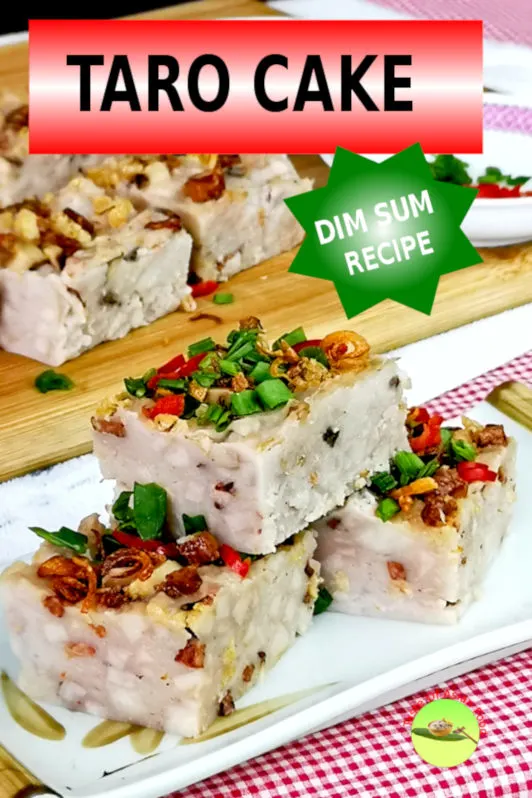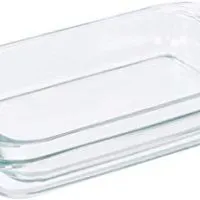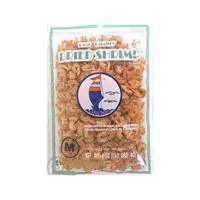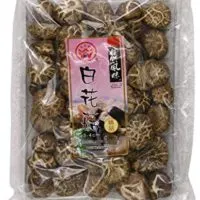Taro cake (yam cake, wu tao gou,芋头糕, 芋頭糕) is a popular Chinese dessert for breakfast and tea break. It is one of such savory delicacies that you can find in the Dim Sum shops serving breakfast, along with shrimp dumplings, Char Siu Pao, Shumai, and others.
If you want to throw in some Asian flavor for a complete Chinese New Year feast (Yes. it is only less than two months from now! ), prepare this time-honored Cantonese-style taro cake for your family and friends. The flavor can be described as out of this world. The rice flour and taro act as a sponge absorbing all the goodness from ingredients high in umami.
But don’t take my word for it. After all, tasting is believing! This Chinese taro cake recipe will show you how to make taro cake step-by-step.

Note: This post may contain affiliate links. Please read my privacy policy for more info. I may receive commissions for purchases made through links in this post. As an Amazon Associate, I earn from qualifying purchases.
1. Prepare the taro cubes
You begin the preparation by peeling the taro’s skin, then cut it into slices, then cubes. Use disposable gloves to protect your hands if the raw taro irritates your skin.
I suggest cutting the taro into small cubes measuring about half a centimeter cube. Small cubed taro roots are ideal as the taro will soften when the rice flour is cooked while steaming. The large cubes will not cook through when the rice flour is set.
2. Prepare the crispy fried shallots
Peel, cut, and slice the shallots. Deep fry the shallots with vegetable oil until golden brown. It has to be done over low heat to avoid over-browning. Drain by pouring it through a wire mesh strainer when it becomes crispy. Set aside the fried shallots for later use. Please keep it in a tight container to keep it crispy. Return the shallot oil to the pan to cook the other ingredients.
3. Get ready the savory ingredients
Please note that although it is named taro cake, it is not sweet but is a savory cake. There is a standard set of ingredients for the Chinese taro cake. These ingredients provide a familiar savory taste in addition to the taro’s unique texture and mild flavor. These ingredients are:
Chinese sausage 蜡肠 / lap cheong and cured meat 蜡肉
Chinese sausage is the primary ingredient of taro cake. You need to remove the sausage casing before cutting it into small dices.
The easiest way is to submerge the sausage into a pot of hot water. The casing expands and loosen from the meat after keeping in boiling water for 30 seconds. Remove it from the boiling water, and you can strip off the casing easily by hand.
Chinese sausages are available year-round, but cured meat may only be sold during the Chinese New Year period.
The flavor is similar to Chinese sausage but is more aromatic.
If cured meat is unavailable, you can double the amount of Chinese sausage to replace it.
Cutting the Chinese sausage and cured meat into small dice is essential. Otherwise, you may have difficulty making clean cuts when you portion the taro cake into squares. The large pieces of meat embedded in the taro cake will obstruct clean cutting when you slice the cake.
Dried shrimp
When you purchase dried shrimp, try to get those free from shells. Otherwise, please pick up all the shells visible to you before soaking them in water. After the dried shrimp are softened, which usually takes less than half an hour, drained, and have a few rough chops. Set aside. You may also substitute it with a dry scallop which is more flavor, but it is expensive!).
Dried shiitake mushrooms
You also need to rehydrate the dried shiitake mushrooms. Soak it in cold water until the Chinese mushrooms are soft enough to remove the stem and cut it into small dice. The time required varies from a few hours for the bigger mushrooms or within an hour for the smaller ones in hot water.
Do not toss away the soaking water of the mushrooms and dried shrimp because it is a high umami juice that should be added to the taro cake mixture later.
Fry the ingredients
Next, give all these chopped ingredients a fry in the shallot oil. Toss the cured meat and Chinese sausage into the pan to fry until it is aromatic.
Add the dried shrimp and continue frying. Then add the mushrooms and combine them. When done, remove a quarter of the ingredients from the pan and set aside. This quarter should be put on the surface of the taro cake before steaming it as a garnish.
Add the taro to the remaining three-quarters and season with salt, sugar, five-spice powder, and ground white pepper.
Stir fry over low to medium heat for a few minutes until the taro turns slightly brown. Set aside.
Some recipes suggest using chicken bouillon or chicken broth for seasoning the taro cake. I prefer to keep it simple (after a few tests) by using the above seasonings, as the sausage, cured meat, mushrooms, and dried shrimp are umami-packed ingredients.
4. Constitute the flour mixture
Combine the rice flour, potato starch, salt, the umami-rich soaking liquid, and water in a mixing bowl.
You can also substitute potato starch with cornflour. If you prefer a less sticky texture, omit the starch and replace it with the same rice flour.
Now heat the rice flour batter over low heat and continuously scrape the pot’s side until the batter transforms into a thick paste. The batter will turn into a paste around 60 to 65 degrees Celsius.
Add the diced taro, fried shallot, and the remaining ingredients to the flour paste. Combine everything to form a homogeneous mixture.
Half-cook the rice flour mixture into a thick paste before adding the taro to prevent the taro and other ingredients from sinking to the bottom. Mix well.
Line a pan or a glass casserole with a piece of baking paper. Grease the paper and the side of the pan. You may have difficulty unmolding the taro cake without lining it with baking paper.
Pour the taro mixture into the pan or casserole. It does not matter whether it is a round pan or rectangular. Give it a few shakes and level the surface with a spatula.
Sprinkle the reserved Chinese sausage, cured meat, and dried shrimp on the surface. Cover the cake with aluminum foil to prevent water from dripping on the taro cake during steaming.

5. Steam the taro cake
You can use a steamer or set up a steaming station with a large wok and steamer rack. Steam for about 35 minutes. To test the doneness, poke a wooden skewer or chopstick deep into the center of the taro cake. The cake is cooked if the skewer or chopstick comes out clean.
Turn the cake upend to unmold the cake. Remove the baking paper.
Please leave it in the refrigerator for a few hours or, better still, overnight until it cools completely. Otherwise, the cake will stick to the knife if you cut it into squares. You can serve it directly or pan-fried both sides of the cake slices slightly before serving. Cut it into 1-inch wide slices, then pan-fried both sides until lightly brown.
It is easier to use a hot knife to cut the taro cake. You can do that by dipping the knife into hot water or heating it on top of the stove. It helps to make a clean straight cut while slicing the taro cake.
Garnish with fried shallots, sliced green onion, and cut red chilies. Best to serve with chili sauce.
You can store it in the refrigerator or freeze it for future consumption.
Note: You will likely love another Chinese cuisine called radish cake (蘿蔔糕 / turnip cake). Follow this link to get the recipe.
Taro Cake

Taro cake (yam cake, 芋头糕, 芋頭糕) is the popular dessert as Dim Sum for breakfast and as a favorite item during Chinese New Year.
Ingredients
Ingredients A
- 140g taro (weight after removing the skin)
- 20g Chinese sausage
- 20g Chinese cured meat
- 10g (2-3 pieces) dried shiitake mushrooms
- 20g dried shrimps
- 2 shallots
Ingredients B
- 1/2 tsp ground white pepper
- 1/2 tsp five spices powder
- 1/2 tsp salt
- 1 tsp sugar
Ingredients C
- 120g rice flour
- 20g potato starch (or cornstarch)
- 430ml soaking liquid plus water
- 1/2 tsp salt
Instructions
- Peel of the skin of the taro. Cut it into small cubes.
- Deep-fry the shallot until golden brown. Drain and keep the shallot oil.
- Cut the Chinese sausage and cured meat into small cubes.
- Soak the dried shiitake mushroom, then cut it into small dice.
- Soak the dry shrimps, drain, and have a few rough chops.
- Fry all the savory ingredients with the shallot oil until aromatic.
- Add the taro and ingredient B. Mix and set aside. Reserve one quarter as the topping of the cake.
- Combine all the ingredients C to form a batter. Cook over low heat until it turns into a thick paste.
- Combine the fried ingredients with the rice paste.
- Transfer it to a greased mold. Spread the remaining quarter of the sausage, curd meat, and dried shrimps on top of the taro cake.
- Cover with aluminum foil.
- Steam for 35 minutes.
- When it is done, store in the refrigerator for a few hours.
- Removed and cut into small pieces.
- Top with fried shallots, and chopped scallions. Served.
Recommended Products
As an Amazon Associate and member of other affiliate programs, I earn from qualifying purchases.
Nutrition Information:
Yield:
8Serving Size:
8 piecesAmount Per Serving: Calories: 119Total Fat: 2gSaturated Fat: 1gTrans Fat: 0gUnsaturated Fat: 1gCholesterol: 9mgSodium: 386mgCarbohydrates: 23gFiber: 2gSugar: 2gProtein: 3g
This data was provided and calculated by Nutritionix on 12/6/2019





Lester Koh
Saturday 17th of October 2020
Dear KP, Is there a magic proportion like your turnip cake recipe, yam: flour: water? Any tips how to choose the right yam to make a good yam cake? Many thanks.
Best, Lester
KP Kwan
Sunday 18th of October 2020
Hi Lester. The proportion of each ingredient in this recipe works well for me. I just pick yam that is firm when touch, with no cracks, no wrinkled looks fresh. KP Kwan
Mew
Friday 3rd of January 2020
Hi. May I use a greased tinfoil container to steam the cake? It seems convenient for me without purchasing baking paper additionally. But I wonder whether it may affect the temperature and the final result.
KP Kwan
Saturday 4th of January 2020
Hi Mew, You do not need to make changes, and it is definitely more convenient. KP Kwan
Lily Chin
Saturday 7th of December 2019
I am sure your son will love your taro and radish cakes. As I live in Perth I used to do these cakes for Chinese New Year, especially the taro cake. My recipe for taro is more or less like yours except I never heard of using dried scallops.
Richard Hooi
Wednesday 14th of September 2022
@Lily Chin, Springer fried shallots on top of the cake before steaming and is optional.
KP Kwan
Saturday 7th of December 2019
Son used to be in Adelaide and now has moved to NZ. Guess Malaysians who are living overseas will love to have this for CNY.
KP Kwan
Saturday 7th of December 2019
Hi, this is KP Kwan. I am happy to see you in this comment area, as you have read through my recipe. I am pleased to reply to any questions and comments as soon as possible.